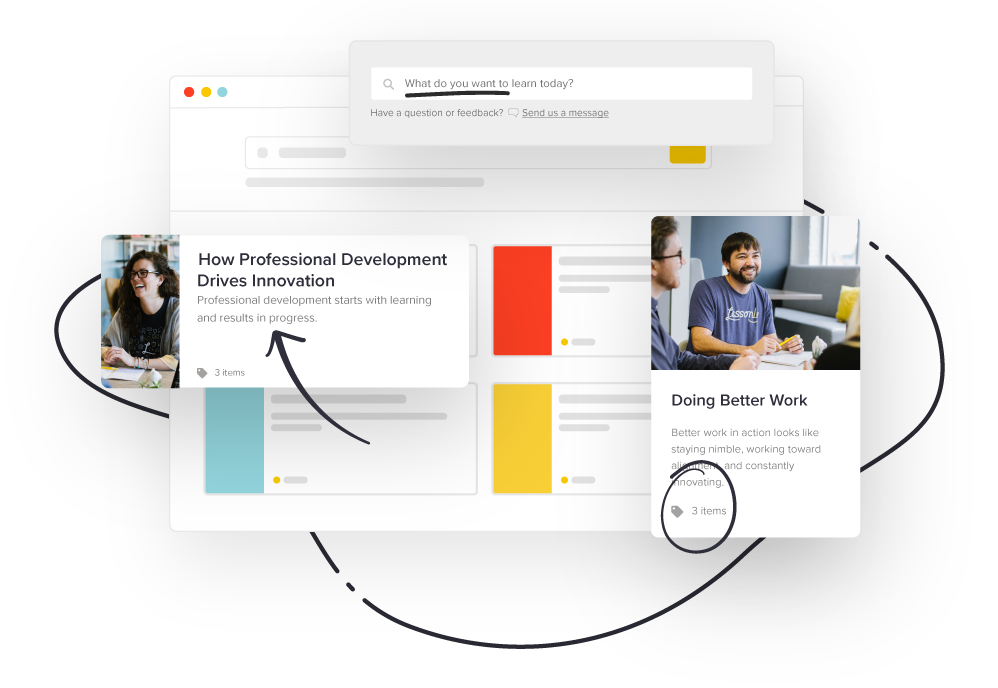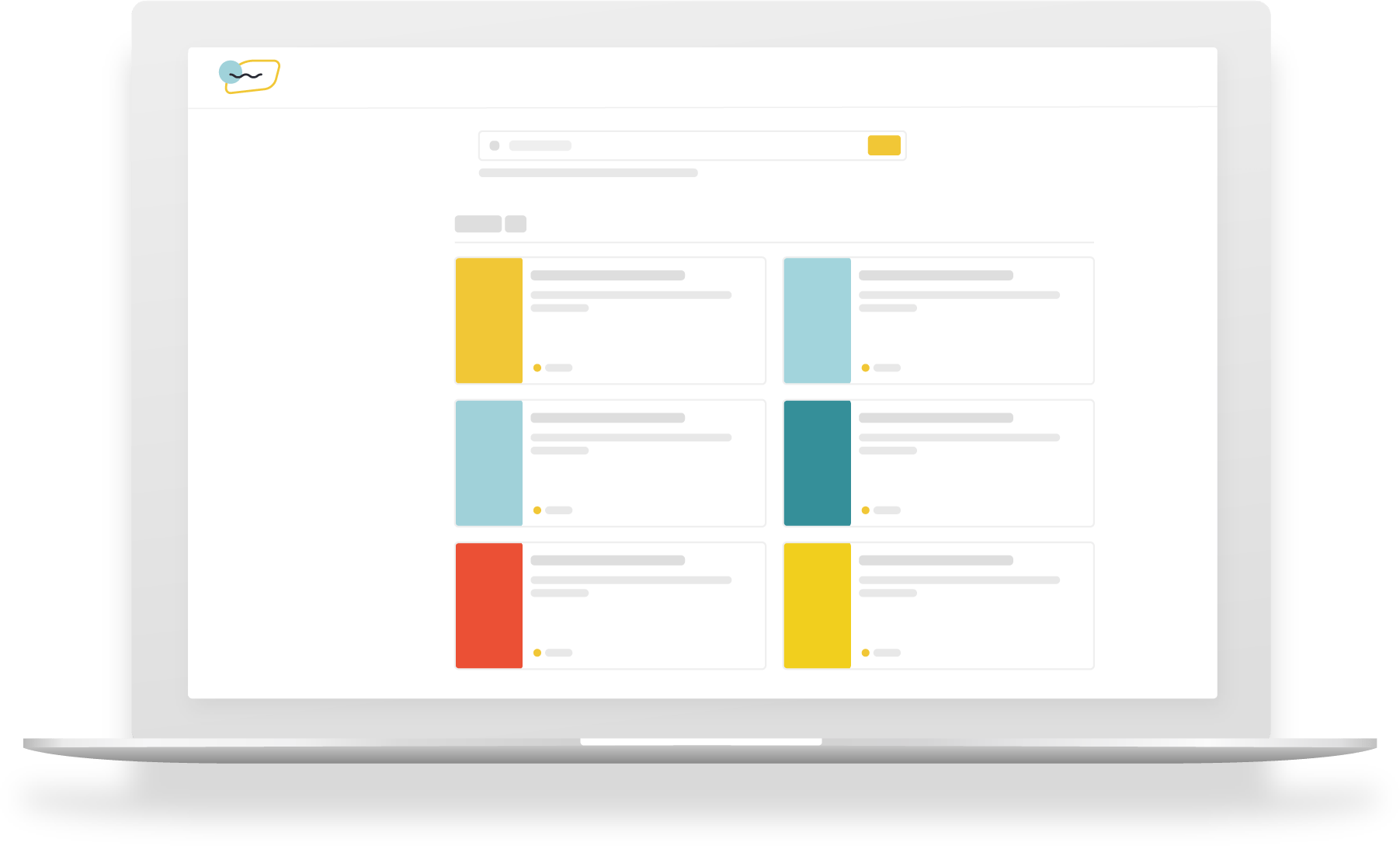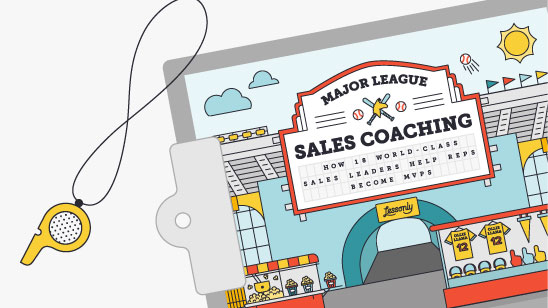Best Online Training Software
Companies that claim to have the best online training software have to define what ‘best’ means, because it’s pretty vague. Really, it’s up to the buyer to decide what functions and features in an online training system make it the best one suited for the company.
When looking for the best online training software, be diligent on finding the unique differences between features and functionality. For an LMS example, a feature may be something like tracking, but a user can then ask, “What does elearning tracking do?” That’s when the functionality plays in. Tracking can mean just seeing who has opened an elearning lesson or it can mean showing the progress of each person as they take a lesson.
We’ll lay out a few of these features and functions to help those researching the best learning management systems and elearning software choose the right one. And if you don’t know the first thing about an LMS, we’ve got you. Read on.
LMS Learning Management System. (What is it?)
Firstly, it doesn’t hurt to define what a learning management system is. The definition of learning management system, simply put, is a system that helps distribute training throughout an organization. What makes up a learning management system is a question that requires further elaboration.
Searching for the perfect elearning system for your team?
If so, you’ve probably read dozens of online training software reviews. Take a look at what our customers have to say; you’ll see that our e learning platform stands out from the crowd. At Lessonly, we take pride in putting learners first. In fact, it’s one of our core values. And our e learning software is designed to make employee
Examples of Learning Management Systems:
Traditional LMS Training System
Traditional learning management systems are SCORM compliant. SCORM stands for ‘Sharable Content Object Reference Model’, and what it does is allow developers to alter code so that any content needed for learning can be easily formatted and put into a standard frame for learning. With a traditional LMS, content is created outside of the system, put into SCORM, then delivered to the learner on the LMS.
Traditional LMSs are generally housed in a company’s HR department with an instructional designer as the head administrator.
Modern LMS (or anti-LMS)
Modern online learning management systems are sometimes seen as ‘anti-LMSs’ because they somewhat strip the traditional LMS down and add certain features it can’t provide. With modern online training systems, content is created, organized, and distributed all within the same interface online.
An online LMS is extremely useful in fast-growing companies that have to continuously get people on the same page and keep them there. Modern LMSs are often used to break up training throughout departments, i.e., the Sales departments train sales reps as opposed to HR just taking care of it all.
At Lessonly, we also see a trend with our product used in the on-demand delivery industry. With a modern LMS, companies can easily train and maintain remote worker learning.
Web Based Training Software and Computer Based Training Software
Much traditional LMS training software is computer based, meaning that it is a software sold for hardwired computers. A person would buy the software and manually download it onto each computer that needs it. This can be helpful in keeping learning information constrained to a certain proximity, but in turn creates a lot of archiving and saving issues.
Web based training software is the new norm. These learning software programs are generally set up as software-as-a-service or SaaS. The software uses the internet and the power of the cloud to house elearning courses and lessons for organizational learning. Traditional and modern LMS systems can be web based, but with modern training software, it’s assumably so.
A web based learning management system software is not to be confused with web based presentation software. Presentation software has a more focused use for strictly presenting to groups. There aren’t any tracking options and file compatibility is limited.
Learning Management System Software for E-learning Training
LMS software for elearning purposes can exponentially increase the speed of learning within an organization. The top-of-mind use for elearning in business is to assist in the onboarding of large groups of employees. But elearning systems for business have a significant impact on learning within a company. They help accelerate and celebrate learning.

Train 62% faster with Lessonly.
See HowCreate Online Courses for Training
As an instructional designer, fitting the right online learning system into your company is crucial to engaging learners to retain and exemplify lessons learned. A clunky, tedious, too big, or too small of a learning management system can cause employees to become resistant to and feel burdened by learning new information. With that said, the best learning management systems make the logistical side of things (e.g., delivery, tracking) effortless so that focus can be spent on the creation of quality content. To create online training, we have a few tips:
- Keep lessons short – It’s 2015. If the software you’re using for online courses doesn’t let you cut up lessons that are taking longer than 15 minutes, then you’ve got a problem. Learners are more inclined to fly through the learning just to get to the end.
- Use a variety of rich media – If you wanted learners to fall asleep, you’d just send them a 50-page PDF of 12-point type and call it sweet dreams. A variety of media conveying the same messaged help reinforce information in a lesson. You can create online training videos, place them on YouTube, and implement those if you want!
- Be funny – Think about the best memories in your life. More than likely, they involved a laugh. This feeds off the previous tip, but build online training by using a funny image or clever line can help relate to information needed to be learned.
- Quiz frequently – We don’t mean quiz at the end of each lesson, but throughout each lesson. Throwing in a few questions throughout a lesson makes for repetition and accountability.
The Lessonly team has an entire guide dedicated to online elearning best practices. If you’re out of ideas, peruse it for some takeaways.
Web Based Training Software Reviews
Software review sites can be beneficial in looking up testimonies on products. Testimonies add a personal context to software reviews and can be the deciding factor in choosing a learning management system. For example, if I read a testimony from a competitor about the uses they’ve found in Software A, I may consider choosing Software A over Software B.
There are few sites specifically geared toward thorough reviewing of software. We suggest taking a look at Software Advice, G2Crowd, and GetApp. With these sites, you can mentally register an online training software comparison.
But it’s important to write down or register the differences between your top choices. The differences are great to point out when it comes down to negotiating.
For example, you need to distribute lessons by sending out links. You can do that with Software A and Software B, and they both are the same price. Software A tracks what learners have opened the lesson. Software B tracks that and keeps up with each learner’s progress. Just the addition of the latter part makes the buying decision simpler.
Lessonly as a Top Training Management System
Lessonly is the anti-LMS that simplifies the traditional LMS for widespread company learning. It’s seamless delivery allows administrators to distribute training with tracking. Admins and managers can tell who learned what, when, and how well. Furthermore, those in charge of managing Lessonly can:
- Tell when a learner needs help – Though you can bulk-assign courses or lessons in Lessonly, each individual is tracked in the learning process. That way, those who excel can be celebrated and those who are slightly behind can be tutored.
- Recognize white flags in content – With quizzing and polling, patterns and trends are recognized in learning content. Managers know that if everyone is getting a certain question wrong, that that subject needs to be reviewed or rewritten.
- Gather feedback – This is highly beneficial to growing organizations that constantly need to improve and innovate processes. Free-response questions in Lessonly let the learners put in their two cents to help develop online training courses and every other aspect of the business.
To create online learning, Lessonly has simplified the content implementation process as well. Creators no longer have to create SCORM-compliant content, but can create online training for employees with rich media right on the Lessonly platform.
Assigning and delivering courses in Lessonly is effortless. In fact, we have clients in sales, onboarding, hr, and customer experience. There’s a continuing trend that, with Lessonly, these departments take on learning for themselves. All learning doesn’t have to be hardwired and stored in an HR department.
When implementing Lessonly, you only have to add learner once, then they are always in your library. And no longer do you have to risk a file being too big for email, because lessons are assigned with links. With Lessonly, you can ditch the training manuals, ditch the PDFs, and ditch the untrackable Google Docs.
Lessonly Features and Functions
The Basic Lessonly package includes unlimited lessons, building, sharing, tracking, groups, and courses. We’ll explain each one of these, but we’ve found that certain companies need more, and that’s why we have several different packages to choose from.
Unlimited Lessons
Lessonly has no data limit. If you need to create 500 lessons, then we’re with you 100% of the way. We even have a client experience team to help clients get employees up to speed and keep them there.
Building
Building lessons in Lessonly is easier than pie. We don’t really understand that anecdote, so let’s say it’s easier than eating a piece of your favorite pie.
We give admins the tools they need to manipulate text, implement rich media, and transition through lessons.
Sharing
Lessonly makes sharing as easy as the copy/paste of a link. As an admin, you can share lessons and courses simply by checking the box of learners you’ve previously added.
Tracking
Tracking learner progress is a great feature when it comes to nurturing learning and improving upon it. With tracking, you can tell who is excelling in learning and who specifically needs a little more attention paid to. Tracking lets administrators see patterns in learning they may not have noticed before.
Groups
With groups, administrators can break up learning and assign to selected groups. If you have a lot of learners, but in different departments, it’s beneficial to have a ‘Sales’ group and a ‘Customer Service’ group so that each group is learning the things only they need to know and can then avoid navigating through the wrong lessons.
Courses
Courses help organize lessons. Administrators can break up lessons into different course categories to further flesh out training material. Courses have many uses, but our favorite are for promotional paths, live training course, and meet the team. You can find out all about those uses here.












